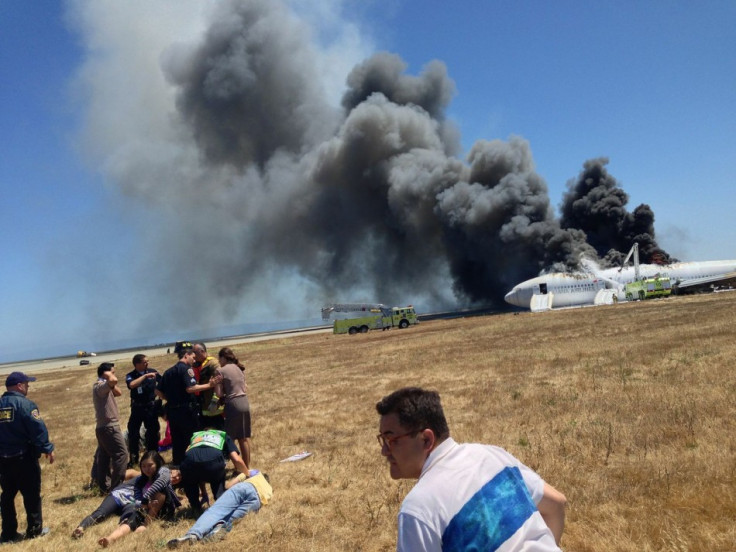San Francisco Plane Crash 911 Calls: 'A Woman is Dying, But No Ambulances Are Coming'

US authorities have released frantic emergency calls made by passengers of the Asiana Airlines flight that crashed at San Francisco airport.
Some of the 291 of passengers pleaded with 911 operators for more ambulances as they struggled to help the wounded just yards from the burning wreckage of the Boeing 777.
"We just got in a plane crash, and there's a bunch of people who still need help and there's not enough medics out here," a woman is heard telling the operator in audio recordings released by the California Highway Patrol.
"There is a woman out here on the street, on the runway, who is pretty much burned very severely on the head, and we don't know what to do.
"She is severely burned. She will probably die soon if we don't get any help" the passenger says.
Two teenage girls were killed when the plane broke up after colliding with a sea wall and crashed on the runway. Another 182 people were injured.
"There are no ambulances here. We've been on the ground 20 minutes," another caller told 911.
"There are people lying on the tarmac with critical injuries, head injuries," the woman continued. "We're almost losing a woman here. We're trying to keep her alive."
National Transportation Safety Board chairman Deborah Hersman said the pilot claimed he was temporarily blinded by a bright flash shortly before landing.
It is not clear whether the light might have played a role in the incident.
"We need to understand exactly what that is," Hersman said. "It was a temporary issue."
Investigators said the pilots of Asiana Flight 214 relied on automated cockpit equipment during landing but realised too late they were flying in too low and too slow.
After the crash passengers were told not to leave the plane and were given the green light to evacuate only 90 seconds after it had come to a full stop as a fire was spotted.
"We don't know what the pilots were thinking, though I can tell you in previous accidents there have been crews that don't evacuate, they wait for other vehicles to come to be able to get the passengers out safely," Hersman said.
Hersman revealed the pilot, identified by Korean authorities as Lee Gang-guk,was only about halfway through his training on the Boeing 777.
It was also the first time Lee was asked to land such aircraft at San Francisco Airport. Co-pilot Lee Jeong-min was on his first trip as a flight instructor.
© Copyright IBTimes 2025. All rights reserved.




















